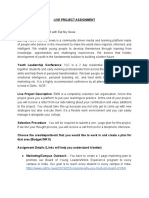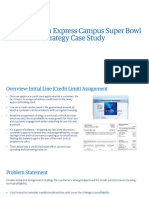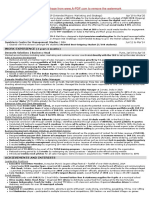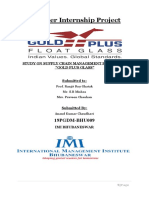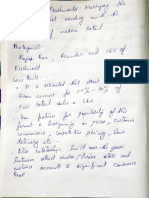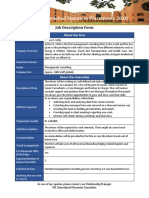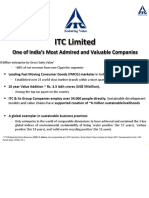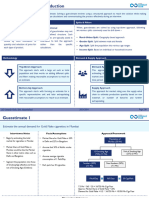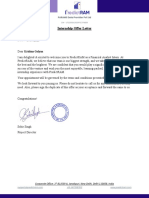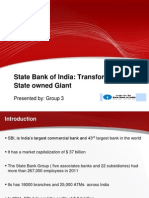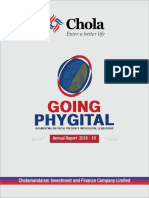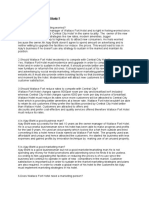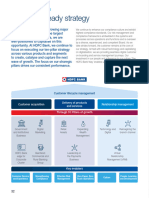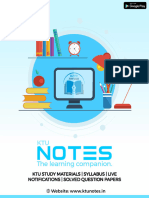FA M E 4 .
0 –
Open Innovation
Challenge
FAME – Solutioning for the future
#FirstAmongEquals
�Detailed problem statements
2
�Track 1 : Product
�About the department - Savings account
Our Vision: To build a world-class bank in India, guided by ethics, powered by technology, and be a force for social
good.
Our Mission: To touch the lives of millions of Indians in a positive way by providing high quality banking services to
them, using contemporary technologies.
As a product manager for savings account, the team is responsible for:
1. Creating a differentiated product by curating features that set it apart in a competitive market
2. Understanding customer needs and preferences through thorough market research. Identify opportunities to
improve existing products or develop new ones.
3. Managing the health of products to ensure seamless service delivery of existing services
4. Ensuring that our products comply with RBI regulations and effectively manage associated risks
5. Providing guarantee that the product can be built with available technology and resources
6. Growing the bank’s savings account portfolio
4
�Problem Statement 1: Background
IDFC FIRST Bank’s power users are ardent proponents of its top-of-the-line features such as branchless banking,
competitive interest rates, zero fee banking and excellent mobile banking experience. Savings accounts are not a
common topic of discussion in most social circles, making it challenging to activate our champion customers
(customers who maintain monthly balances exceeding 1 lakh). We are seeking solutions from bright students like
you on how can we drive referrals from these customers?
5
�Problem Statement 1
You are a product manager at IDFC FIRST Bank, and you have budget of Rs 2000 per Referral. Develop a
comprehensive strategy to enhance referral rates from customers who maintain monthly balances exceeding 1 lakh,
particularly focusing on those who do not engage with relationship managers.
Key deliverables:
• Identify innovative approaches to increase customer engagement to encourage referral behaviour across
customer personas
• Propose solutions that make the referral bonus more appealing within Rs 2000.
• Leverage digital platforms and the existing strengths of IDFC FIRST Bank’s services to drive referrals
• Create a 360-degree go-to-market (GTM) strategy for the referral program, ensuring cohesive and comprehensive
implementation across all channels.
Your strategy should be data-driven, feasible, and scalable, aiming to significantly boost referral rates while
maintaining customer satisfaction.
6
�Problem Statement 2: Background
The salaried segment represents a critical demographic for any bank. These individuals are not only valuable
customers but also long-term partners in financial growth. As these individuals climb the career ladder, their
financial needs become more complex and diverse, encompassing everything from credit cards to various loans.
Starting from a salary account, their journey may extend to credit cards, personal loans, car loans, home loans, and
beyond. The loyalty and share of wallet of salaried customers are crucial metrics for any bank’s success.
Salary Account is the gateway to the salaried individuals. Securing a salary account is tough due to high competition
and resistance to switch. Individuals tend to stick with their first account due to convenience and familiarity. It is
easier to be the first bank to offer the service than to make the customers switch.
7
�Problem Statement 2
As a Product Manager – Salary Account at IDFC FIRST Bank, your task is to devise an enhanced banking proposition
tailored for salaried individuals, with a primary focus on the Salary Account.
Your solution should address the entire lifecycle of these customers, particularly targeting new graduates entering the
workforce from Tier 1 and Tier 2 colleges, as well as affluent segments already established in their careers.
Key deliverables:
• Develop a comprehensive solution that caters to the financial needs of salaried individuals throughout their
lifecycle
• Create a Go-to-Market (GTM) plan that blends traditional and new-age channels to effectively reach and engage
the target segments
Ensure the solution is financially viable, technically feasible, and scalable to support long-term growth and customer
satisfaction.
8
�Track 2 : Business Excellence
�About the department - Business Excellence
Our Vision: To build a world-class bank in India, guided by ethics, powered by technology, and be a force for social
good.
Our Mission: To touch the lives of millions of Indians in a positive way by providing high quality banking services to
them, using contemporary technologies.
Business Excellence team is a niche internal consulting, strategy and program management team. The team primarily
focuses on key strategic initiatives which are horizontal in nature i.e. cutting across the boundaries of the Bank.
These projects cover a wide spectrum of activities including customer experience benchmarking, cost optimization,
new product proposition development, prioritization of digital transformation and ensuring the overarching
governance on key transformation projects throughout the Bank. The team works closely with business heads to drive
business excellence projects from ideation - assessment - impact analysis - recommendation- benefit
quantification. This is a high visibility team which work with CXOs of the Bank and also collaborates with front-line
colleagues to identify gaps/ opportunities in current ways of doing business to reimagine and deliver meaningful
changes.
10
�Problem Statement 1: Background
In today’s fiercely competitive world, where everyone is vying for customer’s time and wallet share, banks cannot
afford to be left behind. Banks are competing not just with their peers but also with players in other industries
given customers’ limited time and spending capacity.
To do so, it is essential for us to actively engage customers in a way that they find additional value apart from
traditional banking services. An ecosystem approach enables a bank to do just that by offering wider range to
solutions which complement our traditional products like payments, loans, credit card, savings account, etc. Some
of the ecosystem examples from banking world are BBVA Valora, FNB nav.
It is a relationship model which leverages core capabilities of third-party service providers, FinTechs, marketplaces
via deep partnerships, and render a one-stop solution to customers. We are looking for ideas from bright students
like you on how we can enter ecosystem play complemented with our existing adjacent products like loans, card,
payments, etc.
11
�Problem Statement 1
• You need create a business case presentation on only 1 area where we can create an ecosystem, which
complements our existing product suite.
• For the area / topic / idea that you pick, you need to provide the following:
• Logic for arriving at your recommended area for entering the ecosystem play (Market sizing, customer need
and synergy, etc.)
• What’s in it for IDFC FIRST Bank? Which products from the existing product suite will be leveraged?
• List of features that IDFC FIRST can provide as a part of the ecosystem. Which ones will be from IDFC FIRST
Bank’s existing product suite, and for which do we need to partner with third parties?
• Potential revenue streams for the Bank
• Go to market strategy for launching the platform
• Estimates on the benefits that IDFC FIRST Bank will reap post successful launch of the platform (qualitative
and quantitative)
12
�About Department: Toll & Transit
Our Vision: To build a world-class bank in India, guided by ethics, powered by technology, and be a force for social
good.
Our Mission: To touch the lives of millions of Indians in a positive way by providing high quality banking services to
them, using contemporary technologies.
IDFC FIRST Bank is leading acquiring bank and enables payments via FASTag at close to 672 toll plazas including 42
parking locations. The Bank is also leading FASTag issuance business, where bank has issued more than 19M+ FASTag
to customers and doing daily transaction value more than Rs. 63Crs+.
National Payments Corporation of India (NPCI) has developed the National Electronic Toll Collection (NETC) program
to meet the electronic tolling requirements of the Indian market. It offers an interoperable nationwide toll payment
solution including clearing house services for settlement and dispute management. Interoperability, as it applies to
the NETC system, encompasses a common set of processes, business rules and technical specifications which enable a
customer to use their FASTag as payment mode on any of the toll plazas irrespective of who has acquired the toll
plaza. FASTag offers the convenience of cashless payment along with benefits like - savings on fuel and time as the
customer does not has to stop at the toll plaza. FASTag is accepted across all national highway toll plazas and select
state highways. The latest count of active toll plazas was around 1020+ Toll plaza’s.
13
�Problem Statement 2: Background
The IDFC FIRST Bank’s FASTag business operates in two primary segments: commercial vehicles and passenger
vehicles. The commercial vehicle segment includes trucks, small transport vans, and similar vehicles. These
customers frequently use FASTag for their regular transactions, significantly contributing to the revenue of the FASTag
issuing bank.
Conversely, the passenger vehicle segment consists of individuals who own cars for personal use. These customers
typically do not travel as often, resulting in low FASTag utilization. This discrepancy in usage patterns leads to
increased costs for the bank, as there are fixed costs associated with maintaining the FASTag infrastructure and
services regardless of utilization levels.
14
�Problem Statement 2
The FASTag issuing bank faces a challenge in balancing the revenue and costs between the commercial and
passenger vehicle segments. While the commercial vehicle segment generates substantial revenue through
frequent transactions, the passenger vehicle segment suffers from low utilization rates. This imbalance
results in higher operational costs
Key deliverables:
• Identify strategies to increase FASTag usage among passenger vehicle owners to optimize revenue and
reduce cost.
15
�Track 3 : Private Banking
�About the department – Private Banking
Our Vision: To build a world-class bank in India, guided by ethics, powered by
technology, and be a force for social good. “By the way, Wealth management is growing
by 66%. It has already touched Rs 16,000 crore
Our Mission: To touch the lives of millions of Indians in a positive way by of AUM, like Rs 10,000 crore last year. So that
providing high quality banking services to them, using contemporary is really coming like a rocket“
technologies. - V Vaidyanathan, MD & CEO, IDFC First Bank
(Speaking to ET Now, Post Q4 FY24 Results)
Global investors are currently seeking stable and attractive investment
opportunities amidst the ongoing challenges posed by the pandemic, as well as
high interest and inflation rates. Private Banking Group (PBG) at IDFC First Bank
caters to this demand through its exclusive First Private proposition. It provides
a comprehensive suite of financial products and services specifically designed
for Ultra High Net Worth Individuals (UHNI) and High Net Worth Individuals
(HNI), including entrepreneurs, business families, and professionals.
Our Private Banking Relationship Managers (PBG RMs) are dedicated to
managing the bank's most affluent clientele. Comprising a team of over 190
skilled wealth managers we offer tailored wealth management and banking
solutions to our UHNI and HNI clients. The PBG team is instrumental in
managing more than 80% of IDFC First Bank's Assets Under Management Wealth Management AUM – Targeting
(AUM), underscoring our pivotal role in the bank's success. Rs. 1 lakh crore in the next 10 years
17
�Problem Statement: Background
Current private banking practices often struggle to proactively address client needs. Clients typically inform
relationship managers (RMs) / Wealth Managers of life events after they occur, hindering the ability to optimize
financial security and capitalize on potential opportunities.
We are seeking data-driven, client-centric wealth management strategy for IDFC First Bank that leverages AI and
machine learning to empower Private Banking RMs in serving their clients. This strategy will utilize life stage
prediction to anticipate client needs and facilitate proactive financial planning, while ensuring a personalized and
human-centered experience.
18
�Problem Statement
Problem Statement: Empowering private banking relationship managers for proactive wealth management through AI-powered life
stage prediction.
Key deliverables:
• Data Acquisition & Enrichment: Gather and analyze data from various sources - Internal & External Sources
• Life Stage Predictive Modelling: Develop AI models to predict upcoming life stages for HNWIs such as:
1. Family Formation & Education Planning: Marriage, childbirth, and educational needs for children.
2. Career Transitions & Retirement: Forecasting potential career changes, approaching retirement, and associated financial needs.
3. Health & Long-Term Care: Predicting potential health concerns and long-term care requirements.
4. Inheritance & Estate Planning: Identifying likelihood of inheritance events and related tax implications.
• Proactive Client Engagement & Personalized Strategies:
1. RM-Initiated Client Meetings: Based on life stage predictions, RMs proactively initiate meetings with clients to discuss potential
future needs and concerns.
2. AI-Generated Reports & Personalized Insights: AI provides tailored reports and initial recommendations to inform client
discussions.
3. Collaborative Strategy Development: Leveraging AI insights, RMs work closely with clients to tailor recommendations to their
specific goals, risk tolerance, and family situations.
4. Risk Management & Insurance Solutions: Recommending appropriate insurance coverage to mitigate potential health risks and
long-term care costs.
5. Human Expertise & Relationship Building: RMs leverage their financial expertise and emotional intelligence to provide holistic
guidance, address client anxieties, and build strong, long-term relationships.
19
�Track 4: Tech for CSR
�About the department - FIRST IMPACT
Our Vision: To build a world-class bank in India, guided by ethics, powered by technology, and be a force for social good.
Our Mission: To touch the lives of millions of Indians in a positive way by providing high quality banking services to them, using
contemporary technologies.
It is IDFC FIRST Bank’s CSR mission is to serve and contribute to the well-being of communities in its fullest sense. We understand
that alone, we can do little, but collectively, we can do so much more. Through FIRST IMPACT, which is IDFC FIRST Bank’s CSR
department, we aim to create broader opportunities across our focus areas as below.
FIRST IMPACT – Areas of Focus
Education Health Entrepreneurship Environment Livelihood
Development Program
21
�Problem Statement: Background
In 2014, India became the first country in the world that made CSR contribution mandatory through a legislation.
The CSR regulations have also seen a change. The current landscape of monitoring and tracking Corporate Social
Responsibility (CSR) projects and funds lacks efficiency, leading to challenges in ensuring transparency,
accountability, and optimal utilization of resources.
The CSR landscape is also seeing a shift from being charity-driven to being more strategic. This calls for a more
data driven approach to solving social problems. Existing systems often suffer from inadequate data collection
methods, fragmented reporting mechanisms, and insufficient tools for real-time tracking, hindering effective
decision-making and evaluation of CSR initiatives by corporates.
Consequently, there is a pressing need for innovative solutions that can streamline the monitoring and tracking
processes. Enhancing data accuracy and accessibility whilst providing stakeholders with actionable insights to
maximize the social impact of CSR projects and funds is one of the primary focus areas. While doing this, it is
imperative to ensure there is no duplicity of data/individuals across different donors of the same NGO.
Existing platforms in the market are not user-friendly for users at the grassroot level and often need to be
available in vernacular languages – basis the region the CSR program is operating in.
22
�Problem statement
We invite innovative minds to create a unified platform for CSR Impact Reporting. This platform should enable the
Bank and our CSR partners to:
1. Enter real-time data accurately and efficiently
2. Provide transparent and timely reports
3. Update budgets regularly and track financials
4. Record and manage data on the individuals they support
5. Comply with CSR guidelines by MCA
6. Leverage technology such as AI and machine learning to analyze CSR data and provide insights
7. Enable better decision making on what to fund – basis evidence from the field
Gamification - Additionally, we encourage participants to think creatively about how to gamify this platform,
introducing a scoring system that evaluates NGOs on their reporting efficiency and transparency. This gamification
aspect aims to motivate and recognize NGOs for their efforts in maintaining high reporting standards.
23
�Thank You!







